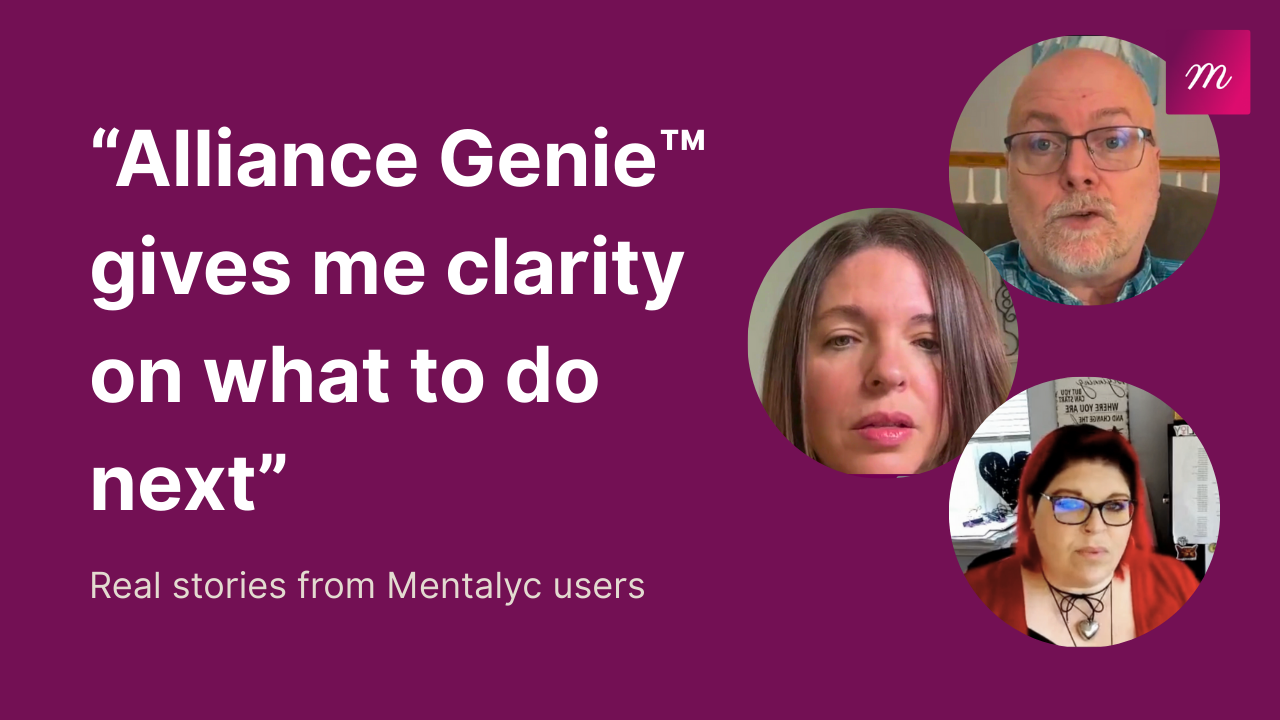Building and maintaining a strong therapeutic alliance is a complex process shaped by multiple interrelated factors. The factors influencing therapeutic alliance include characteristics of the therapist, the client, and the broader context in which therapy takes place.
This article offers a comprehensive overview of the primary factors that influence the therapeutic alliance, organized into therapist-related, client-related, and external/contextual domains.
Therapist-Related Factors Influencing Therapeutic Alliance
- Communication Skills: Active Listening and Clarity
At the heart of any strong therapeutic relationship is communication. Therapists must demonstrate active listening, which involves fully concentrating on what the client is saying, validating their experiences, and reflecting content and emotions back in a way that promotes trust. Clarity in communication also matters; explaining concepts, interventions, and the therapy process in accessible language helps reduce client anxiety and empowers them to participate actively. Misunderstandings, vague responses, or failing to respond empathetically can disrupt the alliance and lead clients to disengage.
For example, a therapist may be counseling an individual bringing in issues they are having in their relationship, and pick up on cues that sounds concerning. The individual may be speaking in a way that minimizes their own harm and the therapist may explain the concept of emotional abuse and trauma bonds. This helps the individual learn that while their experience is valid as is, they may be using harmful coping that leans on self-blame.
- Cultural Competence: Sensitivity to Client’s Background
Cultural competence is essential for fostering mutual respect and trust in therapy. Therapists must understand and respect their clients’ cultural, racial, ethnic, religious, sexual, and gender identities. This involves not only knowledge of diverse backgrounds but also the humility to ask questions and challenge one’s own biases. A culturally attuned therapist creates a safe space where clients feel seen and valued, thus enhancing the therapeutic alliance. On the other hand, a lack of cultural awareness can alienate clients and reduce their willingness to open up.
For example, a client with a different religion may be speaking about pressure they have from their faith which may go against the way in which therapists are taught to respond to certain issues. It’s important to not judge the client and help them make meaning of how their faith is helping them through is, rather than leaving religion out of the conversation.
- Professional Boundaries: Maintaining Ethical Standards
Boundaries are the scaffolding of safe and ethical practice. When boundaries are clear and consistently upheld, clients feel secure and respected. This includes maintaining appropriate physical, emotional, and time-related limits, avoiding dual relationships, and keeping the therapeutic frame intact. Breaching boundaries, even subtly, can lead to confusion, mistrust, and potential harm to the client, severely damaging the alliance. Conversely, an over-rigid approach can create distance and hinder emotional connection. Striking the right balance is key (Pilecki et al., 2021.)
For example, a male therapist may have a female client coming in to work through a traumatic experience and may experience periods of heavy grief. The therapist may offer a hand to hold. The therapist may, over time, begin to notice his client looking for more physical comfort from him in a way that would cross a boundary. He can redirect those cues by encouraging her to speak out about her experiences so she can build intimacy with others who are available for the type of comfort she is looking for.
- Flexibility and Adaptability: Tailoring Approaches to Individual Needs
While consistency is important, so is flexibility. Effective therapists adapt their methods to meet the individual needs of each client, considering personality, presenting issues, and therapeutic goals. This could involve shifting modalities, altering communication styles, or pacing interventions based on the client’s readiness. Flexibility also means being open to feedback and making adjustments accordingly (Galovski et al., 2024.) Therapists who can evolve in response to client needs are more likely to build lasting therapeutic bonds.
For example, a therapist may be working with an individual and using a CBT approach. After 5-6 sessions, the individual states that they don’t feel like this is working because they’re feeling a lot of shame around these triggers that come up. The therapist employs a more emotionally-focused lens like EFT or DBT moving forward to consider the individual.
Client-Related Factors Influencing Therapeutic Alliance
- Openness and Willingness: Client’s Readiness to Engage
The client’s willingness to be open and engage in the therapeutic process significantly affects the strength of the alliance. Clients who are ready to share their thoughts, emotions, and experiences contribute actively to a collaborative relationship. However, trauma, fear of judgment, or previous negative experiences with therapy can limit a client’s ability to open up. Therapists must recognize and honor these hesitations, working gently and patiently to build trust over time.
For example, a therapist may be seeing a new client who is new to therapy. After a few sessions, the therapist may notice the client not opening up. The therapist can continue to ask about the hesitation they show instead of trying to redirect their nervousness.
- Expectations and Motivation: Belief in Therapy’s Efficacy
Clients bring with them expectations about what therapy will be like and how it will help. When clients believe in the process and feel hopeful about its outcomes, they’re more likely to engage consistently and collaborate with the therapist. Mismatched expectations or skepticism about therapy can hinder progress. It is essential for therapists to clarify what therapy entails early on and to periodically revisit goals, ensuring alignment and fostering a sense of shared purpose.
For example, a therapist can help make sure they are aligned with their client by checking in about how they are feeling and their experience in therapy. Routine check ins about what can be expected and not expected in therapy is critical for healing.
- Attachment Styles: Influence on Relationship Dynamics
Clients’ attachment styles, often shaped by early life experiences, deeply influence how they relate to others—including their therapist. Those with secure attachment may find it easier to form a trusting relationship. In contrast, clients with avoidant, anxious, or disorganized attachment styles may struggle with dependency, fear of abandonment, or difficulty trusting others. Therapists must be attuned to these patterns and respond with consistent, attuned care to slowly build safety within the therapeutic relationship.
For example, a therapist may often be on the other end of a client’s anxious attachment style, and they may begin to question the therapists commitment to therapy and wonder how the therapist feels. It’s important for the therapist to offer reassurance and use the therapeutic relationship as an emotionally corrective relationship.
- Cultural and Personal Beliefs: Impact on Therapy Perception
Clients’ personal, spiritual, and cultural beliefs can impact how they view mental health and therapy. For instance, some may see emotional expression as a sign of weakness, or therapy itself as unnecessary or taboo. Others may have strong faith-based frameworks that influence how they interpret distress. Therapists who explore and respect these beliefs, rather than dismissing or ignoring them, create an inclusive space that validates the client’s identity and enhances engagement.
For example, a couple may be in therapy after a spouse asked them to come and one spouse may be more open to therapy than the other. It’s clear they have different ways of coping and perceiving the same issues. As a therapist, it’s important to meet each of them where they are, and guide them to meet each other. Therapists can model that by showing up with curiosity about each perspective and offering validation to both.
External and Contextual Factors Influencing Therapeutic Alliance
- Therapy Setting: In-Person vs. Online Environments
The environment in which therapy takes place can significantly affect the therapeutic alliance. In-person sessions may foster more natural rapport and a stronger sense of presence. However, online therapy offers increased access and flexibility. The success of remote therapy depends on factors such as technological comfort, privacy, and the ability to convey empathy and presence through a screen. Therapists must be mindful of how setting impacts engagement and adjust their approach accordingly (Wies, Landers and Ienca, 2021.)
For example, a therapist who offers both online and in-person therapy may suggest one or the other if one format isn’t conducive for the client.
- Socioeconomic Factors: Access and Affordability
Financial barriers can limit clients’ ability to access consistent care, leading to sporadic attendance or early termination. Even when clients do attend, economic stressors can impact their mental bandwidth and ability to engage deeply. Therapists should be sensitive to these issues, consider sliding-scale options when possible, and avoid assumptions about a client’s resources (Fonagy and Luyten, 2021.) Understanding the socioeconomic context adds depth to clinical insight and enhances therapeutic alignment.
For example, a therapist can help clients find resources to continue their support outside of the office. They may create sliding scale options and offer pro-bono services if their client faces hardship in the middle of treatment.
- Support Systems: Role of Family and Community
Clients’ broader support networks can either bolster or hinder the therapeutic process. Strong familial or community support may reinforce therapeutic gains, while unsupportive or toxic environments can create setbacks. Therapists can work with clients to identify supportive figures and develop strategies for managing external relational stressors. In some cases, involving family members in the therapeutic process may be beneficial if done thoughtfully and ethically.
For example, a therapist can utilize a client’s system to support their growth and healing. By including and integrating the role of family, friends, partnership and community into practice, it can strengthen the bond between therapist and client as well.
- Stigma and Societal Attitudes: Effects on Client Engagement
Despite growing awareness, mental health stigma remains a pervasive barrier. Clients may feel shame for seeking therapy or fear judgment from their families or communities. These societal attitudes can make clients cautious, reserved, or inconsistent in their engagement. Addressing stigma directly and normalizing the therapy process can help create a safer environment. Therapists who acknowledge these pressures and offer validation support clients in feeling understood and empowered.
For example, a therapist can help manage stigma and barriers to access by using self-disclosure in meaningful ways. Sometimes demonstrating bravery and courage can be really healing and transformative for the client.
Conclusion
The therapeutic alliance is the bedrock of effective therapy, but it does not form in a vacuum. It is shaped by a tapestry of therapist qualities, client traits, and environmental influences. From the therapist’s cultural competence and communication style to the client’s attachment history and the stigma they face, each thread contributes to the strength—or fragility—of the therapeutic bond. A deep understanding of these influencing factors enables therapists to foster stronger, more resilient alliances that support healing and growth. Ultimately, a strong therapeutic alliance is not just a goal, but an ongoing, dynamic process—one that demands empathy, flexibility, awareness, and above all, human connection.
References
Pilecki, B., Luoma, J. B., Bathje, G. J., Rhea, J., & Narloch, V. F. (2021). Ethical and legal issues in psychedelic harm reduction and integration therapy. Harm Reduction Journal, 18(1), 40.
Galovski, T. E., Nixon, R. D., & Kehle‐Forbes, S. (2024). Walking the line between fidelity and flexibility: A conceptual review of personalized approaches to manualized treatments for posttraumatic stress disorder. Journal of Traumatic Stress, 37(5), 768-774.
Wies, B., Landers, C., & Ienca, M. (2021). Digital mental health for young people: a scoping review of ethical promises and challenges. Frontiers in digital health, 3, 697072.
Fonagy, P., & Luyten, P. (2021). Socioeconomic and sociocultural factors affecting access to psychotherapies: The way forward. World Psychiatry, 20(3), 315.
Why other mental health professionals love Mentalyc

“Reading transcripts helps me tighten up and come across more the way I want to present myself to clients … it’s helped me improve and keep getting better.”
Licensed Marriage and Family Therapist

“There is a lot more feedback and suggestions in it than before … that makes things a little bit easier for me.”

“It’s really giving me some good confidence … and areas of improvement to see nuances I didn’t see before.”

“It keeps me on a level of assessment about the relationship that has a little bit more objectivity … helps keep me grounded.”







